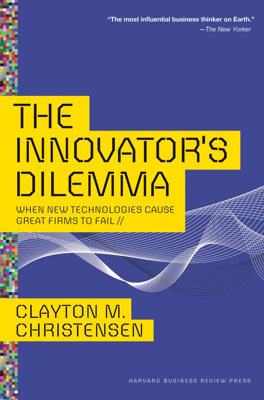Match the Size of the Organization to the Size of the Market
Leadership and Market Size Dynamics
Importance of Leadership in Disruptive Technologies
- Leadership in developing and commercializing disruptive technologies is essential for creating new markets and commercial success.
- Established firms often struggle because small, emerging markets cannot meet their large near-term growth and profit needs.
- The solution involves placing projects aimed at disruptive technologies in organizations small enough to be excited about these opportunities.
Leadership in Sustaining Technologies
- Leadership in sustaining technologies, such as thin-film read/write heads in disk drives, does not provide a significant competitive advantage.
- Established firms can still maintain their competitive position by being followers in sustaining technologies.
Successful Strategies for Entering Markets
- Disruptive Technology Leadership: Firms leading in disruptive technologies within the first two years of market emergence are six times more likely to succeed.
- First-Mover Advantages: Companies that entered new value networks early achieved significantly higher revenue growth compared to those that entered later.
- Emerging vs. Established Markets: Companies entering emerging markets with proven technologies found greater success than those competing in established markets with new component technologies.
Company Size and Growth Challenges
- Large, successful companies face difficulty transitioning to emerging markets as their growth demands increasingly large revenue increments.
- Examples:
- Apple’s Newton PDA struggled because the emerging market could not provide the necessary growth despite initial promising sales.
- Seagate delayed entering the 3.5-inch drive market until it became large enough, but missed early adopters' learning and market-shaping opportunities.
Case Studies and Organizational Strategies
- Apple’s Newton PDA: Despite initial success, Newton was seen as a failure because the small market couldn't meet Apple's growth requirements.
- Priam Corporation and Seagate:
- Priam failed in the desktop market due to its slower two-year product development cycle.
- Seagate struggled with 3.5-inch drives due to delayed market entry and inability to capture the portable computer market.
- Independent Organizational Units:
- Control Data Corporation succeeded in the 5.25-inch drive market by setting up an independent unit in Oklahoma.
- Allen Bradley transitioned from mechanical to electronic motor controls by acquiring small companies and integrating them as separate units.
- Johnson & Johnson maintained success by launching disruptive technologies through small, autonomous companies.
Summary
- Leadership in sustaining technologies is not critical, but leadership in disruptive technologies offers significant benefits.
- Large companies must address the challenge that emerging markets can’t fulfill their near-term growth needs by placing disruptive projects in smaller, independent organizations.
- Success stories highlight the benefits of matching the size of the organization with the market opportunity, whether through spin-offs or acquisitions of smaller companies.
